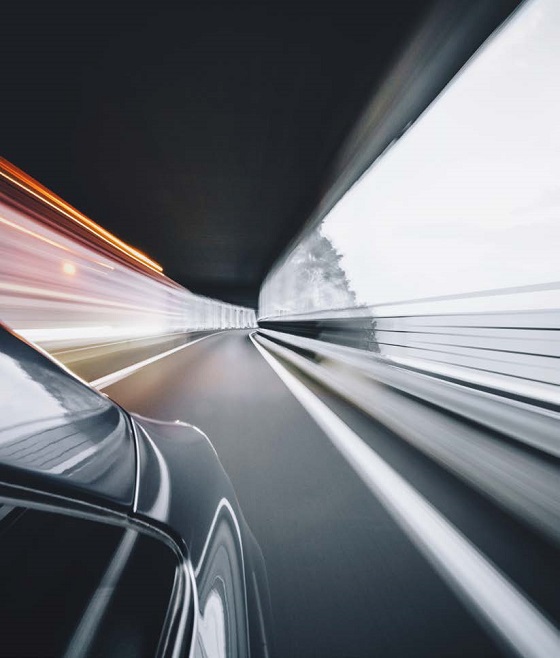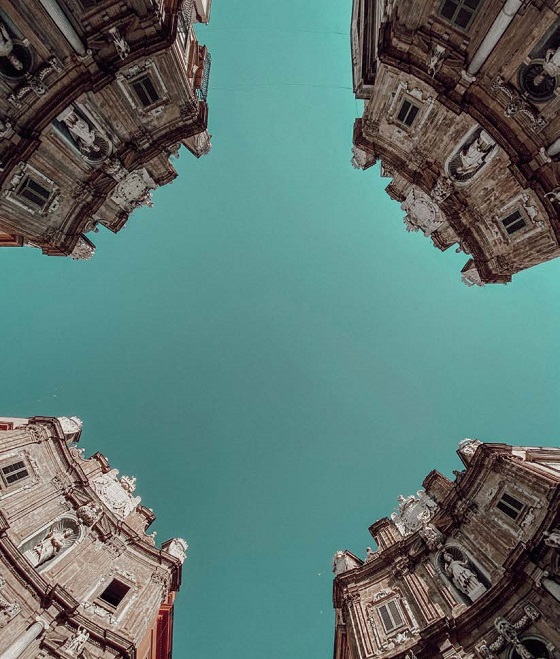Interview with Umberto Palermo
Born in Sicily in the very city he bares the name of, Umberto Palermo moved North to Milan, the world capital of fashion and exquisite design, at an early age. There he learned his trade, and soon moved on to Turin where he started mingling with the world of automotive, making his mark in the industry by designing some stunning versions of Italy’s supercars. While he has long left Sicily, Sicily hasn’t left him, lingering on in his speech and refined manners. Like all designers, Palermo is a dreamer, yet if he feeds on the intangible he has a gift in donating a very material shape to everyday, mundane objects, with a deep understanding of industrial processes and consumer products’ ins and outs. He simply was the perfect match for a Chinese company aspiring to grow and show the world its soul and feelings, beyond the cold, impersonal logics of numbers and performance. In this interview, Palermo shares some exclusive, unfiltered insight into the workings of Homa’s design.
How did your collaboration with Homa start? What particularly attracted you?
The human perspective was a key element to our partnership. It started from a longstanding relation of trust and mutual respect. I had Known Federico (Rebaudo, Ed.) for a long time as we had worked together on several projects in the past. What I found most fascinating about this particular proposal was the opportunity for me to literally enter the homes of millions of families. As a designer I specialise in the automotive industry, and I get to design from sports cars to utility vehicles but I have always been fascinated by the possibility to invite myself into other people’s homes and help improve their lives. Food preservation is an important subject in that sense, which I found extremely stimulating and challenging. At the time Homa was manufacturing refrigerators in an almost purely utilitarian way, so for me it was like starting from a blank slate in terms of design, which made it all the more appealing. I liked the fact they aspired to producing entire ranges of new, original products. When talking about ranges, in the automotive world I come from, one immediately thinks of “platforms”. That kind of strategic reasoning immediately resonated with my way of conceiving a product. I also liked the idea of working on the only “living” entity around our homes beyond humans and pets, the refrigerator, which is always on and is like an additional member of the family, simply a technological one.

Sicilian born designer Umberto Palermo moved his first steps on Milan’s Design scene after graduating at Villareale’s Art School in Monza. When he later moved to Turin, he made his mark in the automotive, yachting and aeronautical industries, and founded Umberto Palermo Design in 2010. Beyond his passion for cars he designed unforgettable versions of the Fiat 124 and the Alfa Romeo 8C Palermo excelled in many other fields, among which household appliances, establishing long lasting partnerships with Homa Appliances and Ariston Thermo. To date, his work won him 8 Good Design Awards. Mole Urbana, a new paradigm in urban electric mobility, is his latest, successful project.
How does one design a global product that fits local needs and cultures?
Not only does it have to appeal to different local and regional cultures, it also needs to fit the identity of the various brands it will be marketed under. We should not forget we are talking about an OEM context. Let’s start from the assumption that anywhere in the world, human beings need to feed, and preserve food properly. Apart from well-known ancient techniques like salting or smoking, nowadays fresh food is almost universally preserved through cooling, and in many cases, freezing. That’s the common ground we are starting from: my milk must stay fresh, and so do my vegetables, my meat, or fish. This is true in Sicily, Germany or China. It’s a global prerequisite. Then there’s the question of size, in fact a matter of both architecture and culture: houses tend not to have the same exact dimensions in different countries, and culturally, some markets might prefer larger appliances, or on the contrary, more compact, unobtrusive ones. Look at the way airports are built in different parts of the world: in China they’re really impressive, like cathedrals, with very high ceilings, whereas in Europe we tend to have lower ceilings, mainly to save on energy consumption. The next element we need to consider is style, beyond the shape of the object that is more or less fixed for everybody, be it two, three of more doors, more or less bulky, tall or small. We’re talking about the “skin”, or the “dress” of the appliance. Here we work on textures, colours and finishings. It is no coincidence that many colours dedicated to the Asian markets are different from those destined to Europe. It can go as far as having special, dedicated colours for individual countries that have specific tastes. So as far as diversification is concerned, it is mostly about the “outside”, but since Homa is an OEM producer, we must not lose sight of the fact that these products will be branded under someone else’s name, so they should not have too strong of a characterisation but respect those globally accepted standards for their categories. Yet once in the stores, they still need to differentiate from one another. Consumers would be confused if products from several different brands looked exactly the same. That’s where the concept of platform comes into play, since we can easily introduce a certain degree of brand personalisation while using the same product platform.Thanks to the platform concept, we can introduce a certain degree of brand personalisation to differentiate products in the stores.
Talking about a product’s dress, is it true that Italian taste and design are still highly considered?
Yes, I can confirm that Italian design is still very much appreciated in all industries, not only in the appliances world. I think our greatest strength is balance. We can design beautiful products without unsightly excesses. When I’m told that beauty is subjective, I tend to disagree. Beauty is indeed very objective, and is all about balance and proportions. Italians have always been, and still are, true masters in this, in every field. Ultimately, it is that very balance that allows our products, in Homa’s specific case, to fit the various visual brand identities of clients with only slight external adjustments. In this we’re helped by the fact that brands themselves also tend to aspire to a balanced, globally acceptable design. There are some exceptions, of course, such as the well known Italian brand that has a decidedly vintage feel to it, with rounded shapes and a markedly fifties look. But they’re exceptions, precisely, and are mainly niche products. Markets don’t really want products that are too strongly characterised from a design perspective. The vast majority of refrigerators sold worldwide are “balanced”, also since they are often free-standing, on full display in consumers’ homes.Of course, as a designer, I would like these products to express more of my personality, but in the end these fridges are not “mine” and need to be sold, so one must set one’s artistic ego apart and consider what really needs to be done. That, too, is balance.
I disagree with those who say that beauty is subjective. It is indeed very objective, and is all about balance and proportions.
The concept of "balance" is in fact relative: you are always balanced with respect to some kind of centre of gravity. In our case consumers’ taste and trends in the industry. How do you keep up with them?
To be totally honest, I don’t really know how to answer your question. I think it’s mainly instinctive, I can sniff a trend! Yet you can’t always trust your instinct, and you still need some kind of method. Also, I often say that the person who buys a car is the very same person that buys a sofa, a boiler and… a refrigerator! At UP (Umberto Palermo’s design studio) we deal with a variety of different product types and industries so we constantly gain valuable insight into consumers’ aspirations and societal trends in all fields. Sometimes I find it hard to pass on this sort of intelligence to clients. In the case of Mole Urbana, an urban mobility vehicle, which to my clients in the automotive industry looked like the opposite of a car, the only way I could transform my intuitions into real products was to create my own brand, literally buy a factory and produce it myself! After the launch of our first electric quad-minicar we received more than 5.000 orders and are getting offers from companies who want to buy the entire operation! What I say is that we shouldn’t limit ourselves to spotting trends, we should aim at creating them. However, when it comes to OEMs and refrigerators, you cannot simply create trends, but have to cater for the needs of a multiplicity of other companies and brands first.How does that translate into products?
If the shape hasn’t changed much over the years, colours tend to have evolved much more significantly. A few years back, if it wasn’t white it wasn’t a fridge! Then we had the stainless steel period, which is now over, thankfully. Today we have moved on to the burnished steel finish, which is easier to integrate into any kitchen. My mission is certainly not to make an iconic product. Homa serves 99% of the world’s top manufacturers, and it becomes even more difficult to come up with a really balanced product that pleases everybody. Sometimes what might appear like “anonymity” is in fact deliberate “balance”. So what are the areas of intervention for the designer I am? Perceived quality, for one, through the materials employed. Take the front panel, for instance. We don’t want the steel sheet to appear crimped, but this means higher costs in terms of moulds and scraps. The same principle of perceived quality applies to the internal cavity: we want angles to be sharp and not rounded to enhance the perception of capacity. In other words, end customers’ perception must prevail over production process convenience.A few years back, if it wasn’t white it wasn’t a fridge! If the shape has remained substantially unchanged, colours have evolved a lot.

OEMs typically look at cost and production process, while you suggest that end consumers be included, and even prevail, in the equation. Was it difficult for you to convince Homa to accept and implement your ideas?
Thanks to Federico’s (Rebaudo) role and background, Homa understood and adopted those ideas, which is a very bald move for a pure OEM producer, but which also proved extremely successful. Michael (Yao, Homa’s CEO) is a forward-looking executive with an innate capacity to listen and observe, and that’s the reason Homa embraced this philosophy and is doing so well. When you open the door of a Homa refrigerator, you immediately get a sense of robustness. When you catch a glimpse of the hinges, which are no casual detail, you get the same impression for their steel-finish look. Edges are as sharp as in the premium class products of top brands. Metal and plastic-moulded parts are perfectly aligned, just like in automotive. The use of chrome in some of the detailing has been equally thought over. Even the apparently inconspicuous gaskets became a lot sleeker and pleasing to the eye. It did take some time to achieve such level of sophistication, since Homa had to pass on the same attention to detail to their own suppliers, and that took some explaining and a huge shift in culture, but in the end, Homa made incredible progress in only a few years. So did their bottom line, with annual sales soaring from just a few million units to nearly 12 million as they kept winning over new clients whose brand identity typically relied on perceived quality.What are the new challenges in terms of design?
The iPhone changed the rules of the game in almost every industry. Today the challenge is to equip your products, any product, with more sophisticated and ever more interactive touch-screen displays and user-interfaces. We’ve already made some significant steps forward with regard to control panels and we’ll soon see even more novelties on that front. I think we will also see an increased attention to certain accessories, like special drawers for medications, cosmetic products or pet food, which we can easily accomodate thanks to the platform architecture.When Homa come to me and tell me about what they’d like to do, I have a duty to listen and respect their vision and their essence.
Does Homa ever give you precise style directions, or do they leave it entirely to you?
All the time, and it’s important that they do. It’s a two-way communication process. In my profession, it’s very easy to get carried away by one’s ego, and one should avoid that at all costs. It’s a question of being able to put on your client’s hat when designing a product: they know their products better than anyone else. They have the experience, the vision, and have invested in R&D and market research. As a designer you must trust and respect your clients in the first place, and then offer your professional input, which can be as disruptive and creative as you want but must reflect their essence, their nature and their aspirations. When Federico comes to me and tells me they’d like to do this and that, I have a duty to listen. Then only time can tell whether I had the right intuitions, for even if my project was immediately accepted and appreciated by the company executives, the real outcome of my contribution, in terms of success on the market, will only emerge after a year or a year and half. It’s nerve racking, but exciting at the same time, and rewarding. When I walk into a store, anywhere in the world, and see the “wall of white” made up of refrigerators of all the different brands, I know that one in five of them was made by Homa, and designed by me. You can’t imagine how much this fills me with pride!Tell us about your most important "first" with Homa
It has to be my first official encounter with them. I got to meet directly with Michael Yao, now Homa’s CEO. At the time he was heading the International Business Center. Thanks to Federico Rebaudo, the ice had already been broken as we had spent an entire day together at the Salone del Mobile in Italy, talking about Italian food and design in a most casual and informal way. I felt at home with them right from the start. It wasn’t at all like with my previous Chinese clients. The first official encounter was instead in a formal meeting at a luxury hotel in China. I was impressed by Michael Yao’s personality. This guy was my age, in fact the three of us were born in 1973, and he already had such important responsibilities. I was impressed by his strategic understanding of the world economic scenario and profound knowledge of the industry. Yet he was prepared to listen. More than ten years on, things haven’t changed, yet together we changed the world of OEM.Ten years on, we haven’t changed, yet together, we changed the world of OEMs.

Copyright © Homa 2024
All rights reserved

.jpg?VGhlIFBlcmZlY3QgU2xvdC1pbijmraPnoa4pLmpwZw==)












.jpg?MTkyMHg3MjDvvIhkZXPvvIkuanBn)
.jpg?MTAyNHg3NDDvvIhkZXPvvIkuanBn)




















